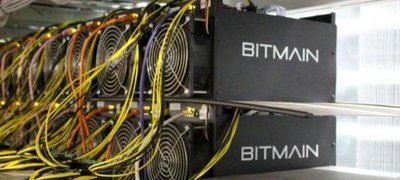Norway, with its abundance of hydroelectric power and cool climate, has emerged as a prime location for cryptocurrency mining. This has led to a unique opportunity: acquiring discounted Bitcoin miners within its borders. But navigating this terrain requires careful planning and execution. This guide will provide a step-by-step approach to securing those sought-after rigs.
The initial step is thorough research. Understand the different types of mining hardware available, focusing on their hash rate, power consumption, and overall efficiency. Antminer, WhatsMiner, and AvalonMiner are common brands. Consider the latest models and compare their specifications against your budget. Remember that older models, while cheaper, may be less profitable due to their lower hash rate and higher energy consumption. Also, thoroughly investigate the current market price for new and used miners. Websites like eBay, Alibaba, and specialized mining marketplaces can provide valuable insights. Scrutinize listings for inconsistencies or red flags.
Next, establish contact with reputable Norwegian mining farms or brokers. Norway boasts a well-established mining infrastructure, and many companies offer both hosting services and hardware sales. Directly contacting these entities allows you to verify the authenticity of the miners and potentially negotiate better prices. Research their reputation online, looking for reviews and testimonials. Ensure they have a proven track record and a transparent business model. Prepare a detailed list of questions regarding the miner’s history, condition, and warranty. Request detailed specifications and photos of the equipment.

Before committing to a purchase, conduct a thorough inspection of the miners. If possible, arrange for an on-site inspection to physically examine the equipment. Look for signs of wear and tear, damage, or modifications. If a physical inspection is not feasible, request detailed photos and videos showcasing the miner’s condition from multiple angles. Request hash rate reports and uptime logs to verify the miner’s performance and stability. Ask for documentation proving ownership and compliance with Norwegian regulations.
Negotiate the price and payment terms strategically. The price of used miners is influenced by factors such as age, condition, hash rate, and market demand. Research comparable listings to determine a fair price. Don’t hesitate to negotiate, especially if you identify any flaws or deficiencies during the inspection. Agree on a secure payment method, such as escrow services or bank transfers, to protect your funds. Avoid using payment methods that lack buyer protection. Clarify the shipping and insurance arrangements, ensuring that the miners are adequately protected during transit.
Secure reliable hosting services for your newly acquired miners. Norway’s cool climate and access to cheap hydroelectric power make it an ideal location for mining operations. Many mining farms offer hosting packages that include space, power, internet connectivity, and maintenance. Compare the hosting fees, service level agreements (SLAs), and security measures offered by different providers. Ensure the hosting facility has adequate cooling systems and backup power generators to prevent downtime. Understand the terms of the hosting contract, including the duration, payment schedule, and termination clauses.

Comply with all relevant Norwegian regulations and legal requirements. Cryptocurrency mining is subject to various regulations in Norway, including tax laws, environmental regulations, and anti-money laundering (AML) requirements. Consult with legal and financial professionals to ensure you are compliant with all applicable laws. Obtain any necessary licenses or permits required for operating a mining facility in Norway. Maintain accurate records of your mining activities, including income, expenses, and power consumption.
Continuously monitor and optimize your mining operations. Once your miners are operational, closely monitor their performance and profitability. Track hash rates, power consumption, and pool rewards. Regularly update the miner’s firmware to optimize performance and security. Adjust cooling systems and ventilation to maintain optimal operating temperatures. Diversify your mining pool participation to mitigate risk. Stay informed about the latest developments in the cryptocurrency industry and adjust your mining strategy accordingly. This includes monitoring the performance of BTC, ETH, and even considering the potential of DOGE if its mining algorithm aligns with your hardware capabilities. Consider joining a mining pool for more consistent rewards.
Finally, consider the environmental impact of your mining operation. While Norway’s hydroelectric power is relatively clean, mining still consumes significant energy. Explore ways to minimize your carbon footprint, such as using renewable energy sources or implementing energy-efficient cooling systems. Participate in carbon offset programs to mitigate the environmental impact of your mining activities. Support sustainable mining practices that prioritize environmental responsibility.
By following these steps, you can navigate the complexities of buying discounted Bitcoin miners in Norway and establish a profitable and sustainable mining operation. Remember, due diligence, research, and a commitment to responsible mining practices are key to success.





One response to “Step-by-Step Guide to Buying Discounted Bitcoin Miners in Norway”
This guide thoughtfully navigates the complexities of acquiring discounted Bitcoin miners in Norway. It combines practical tips with market insights, ensuring readers understand both the technical aspects and strategic timing for purchases. A valuable resource for both newcomers and seasoned investors, it highlights potential pitfalls while encouraging informed decision-making.